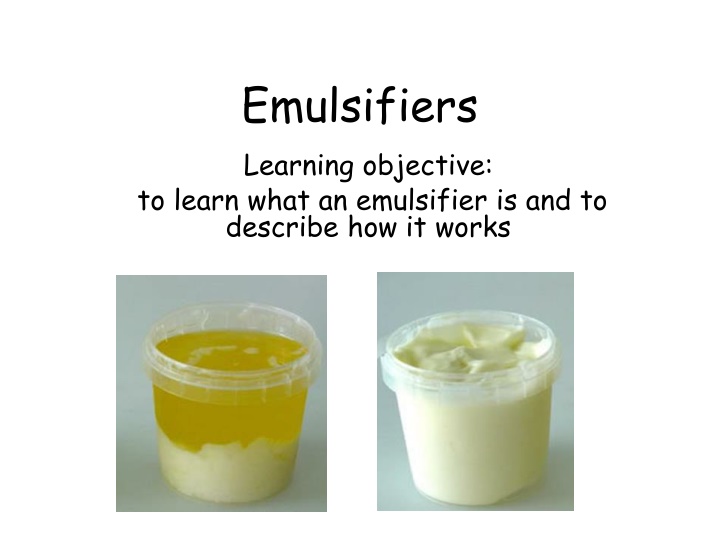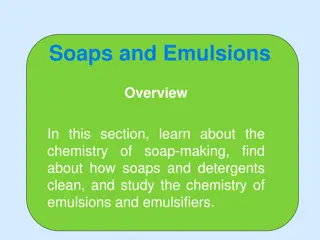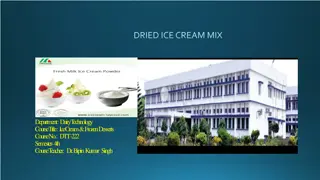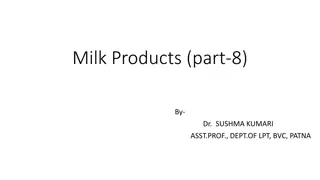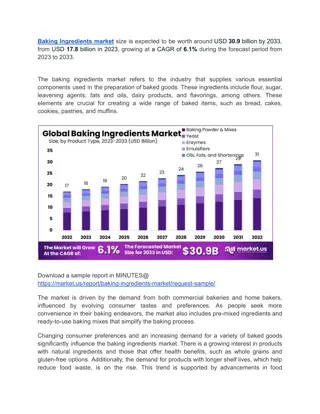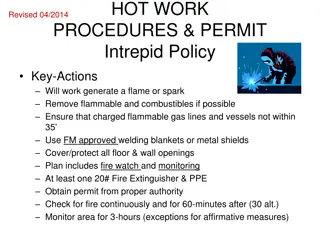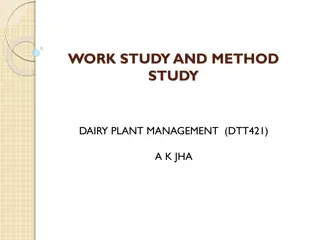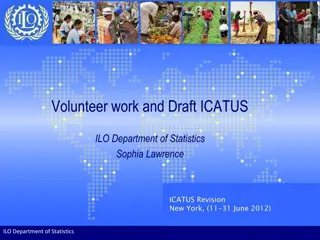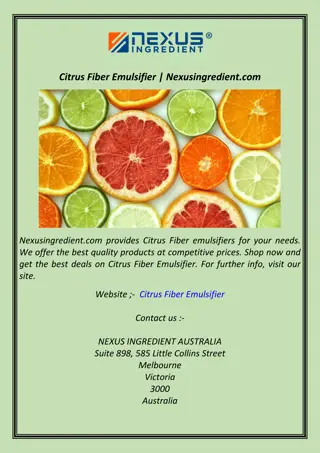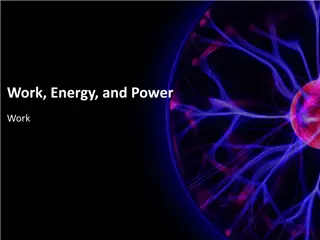Emulsifiers: How They Work
Concept of emulsifiers and their role in mixing oil and water. Learn about the different types of emulsions and the molecular structure of emulsifier molecules. Discover why emulsifiers are essential in everyday products like mayonnaise.
Uploaded on Apr 09, 2025 | 2 Views
Download Presentation

Please find below an Image/Link to download the presentation.
The content on the website is provided AS IS for your information and personal use only. It may not be sold, licensed, or shared on other websites without obtaining consent from the author.If you encounter any issues during the download, it is possible that the publisher has removed the file from their server.
You are allowed to download the files provided on this website for personal or commercial use, subject to the condition that they are used lawfully. All files are the property of their respective owners.
The content on the website is provided AS IS for your information and personal use only. It may not be sold, licensed, or shared on other websites without obtaining consent from the author.
E N D
Presentation Transcript
Emulsifiers Learning objective: to learn what an emulsifier is and to describe how it works
Outcomes * To remember foods (and other examples) of emulsions in everyday life (G) ** Compare a mixture of oil and water with and without an emulsifier (F/E) *** Explain how an emulsifier works (D/C)
Washing the pots After we have cooked and eaten, our dirty pans and dishes often have lots of fat molecules. What does washing up liquid do?
What does washing up liquid do? Write down how you tested Show your results in your book and say what washing up liquid does
Immiscible liquids An immiscible liquid is a liquid where the two solutions have not mixed properly. Eg oil and water The oil and water form layers
Why we use emulsifiers The oil and water separate in mayonnaise without emulsifier.
emulsions Oil and water do not mix An emulsifier helps these to mix Emulsifiers work because they have two parts to the molecule A water loving part ( hydrophilic) A water hating part (hydrophobic) The water hating part likes oil
There are two types of emulsions. An oil-in-water emulsion contains small droplets of oil that are dispersed in water. Alternatively, a water-in-oil emulsion has small droplets of water that are dispersed in an oil.
Emulsifier molecule Hydrophilic Hydrophobic Bonds to water Bonds to oil
How emulsifiers work Emulsifiers have molecules with two parts: A fat-loving or hydrophobic end A water-loving or hydrophilic end
How emulsifiers work The hydrophilic end bonds with water molecules. The hydrophobic end bonds with oil molecules In this way, the oil droplets stay mixed with the water.
Other emulsions Some paints are emulsions Milk is an emulsion Mayonnaise is an emulsion of oil and vinegar with egg. Egg is the emulsifier
Mayonnaise The egg yolk binds the oil and vinegar together to make a smooth substance The egg yolk does not separate because the egg yolk has molecules in it that have both hydrophilic and hydrophobic groups The hydrophobic tail is attracted to the oil whilst the head is attracted to the water and pulls the oil into the water
Emulsifiers An emulsifier is a substance that causes immiscible liquids to mix Detergents are emulsifiers. They help when washing up as they allow the fat and water to mix.
Detergents Eventually so many detergent molecules are stuck to the grease that the outside of the grease is coved in water soluble ends The hydrophobic ends of the detergent start to dissolve in the grease. This leaves the hydrophilic end on the outside The grease now dissolves in the water and floats away grease grease grease Cloth Cloth Cloth
Foods that Commonly Contain Emulsifiers Biscuits Toffees Bread Extruded snacks Chewing gum Margarine / low fat spreads Breakfast cereals Frozen desserts Coffee whiteners Cakes Ice-cream Topping powders Desserts / mousses Dried potato Peanut butter Soft drinks Chocolate coatings Caramels
To finish off Oil slicks cause massive amounts of damage to the environment. How could a detergent help to clean up an oil slick?
In your books Draw a diagram to explain how emulsions work. Use the title How emulsions work A fat-loving or hydrophobic end A water-loving or hydrophilic end * To remember foods (and other examples) of emulsions in everyday life (G) ** Compare a mixture of oil and water with and without an emulsifier (F/E) *** Explain how an emulsifier works (D/C)
True or false? Oils dissolve in water. FALSE Oil will not dissolve in water they will not mix. They are immiscible.
True or false? A substance which makes an oil mix with a water in small droplets is called an emulsifier. TRUE.
True or false? Emulsifiers work because their head dislikes water. FALSE Emulsifiers have a head which likes water.
True or false? Common examples of emulsions are milk AND mayonnaise. TRUE! Can you name any more?
True or false? Without emulsifiers, emulsions would be thick and smooth. FALSE! Without emulsifiers, emulsions would separate into blobs of oil floating in the water.
